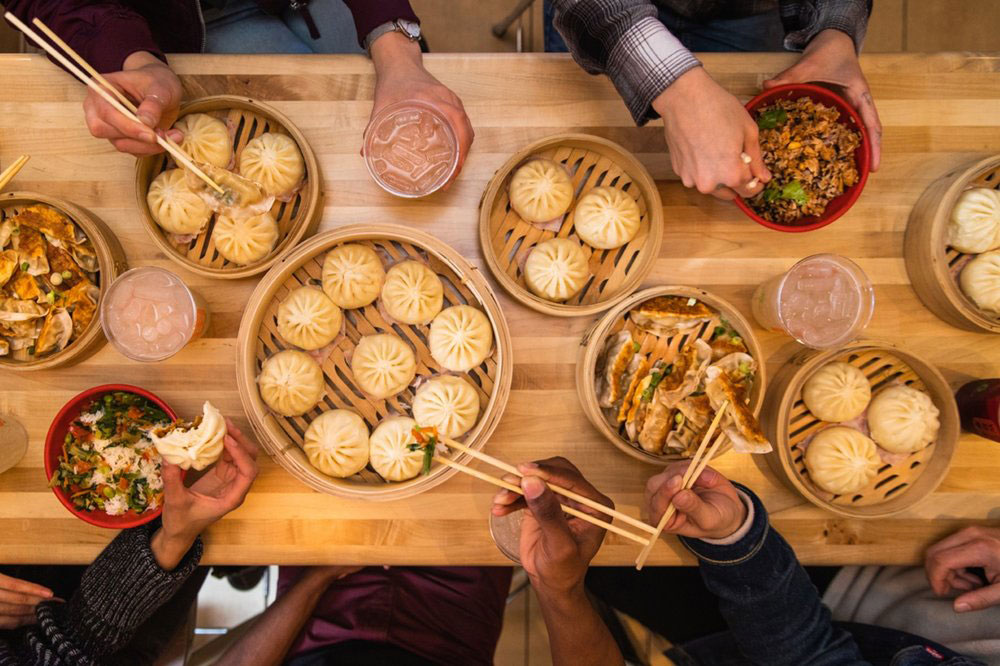One of the most intriguing aspects of virtual restaurants is the ability to scale at a pace unseen outside of Silicon Valley. MrBeast Burgers went from 0 to 400 nearly overnight and, now, Wow Bao is looking to grow even faster through virtual channels.
Geoff Alexander, the president and CEO of Chicago-based Wow Bao, said the brand is looking to more than double MrBeast’s pace, scaling dramatically from its current base of 250 virtual outlets serving the brand’s steamed buns.
“We have the moonshot goal of 1,000 units at the end of the year. At the end of this month, we’ll be one third of the way there with two thirds of the year remaining,” said Alexander.
Already, he said, there were 125 locations in the pipeline, and a new deal with Ghost Kitchen Brands promises to add more fuel to its galactic ambitions.
Ghost Kitchen Brands has locations across Canada and the U.S. where it cooks food from multiple restaurant brands in centralized kitchens. The company has a similar goal for massive scale and seeks to have a location every 12 kilometers (7.4 miles). That’s quite a moonshot as well and it’ll take some major growth from its base of 20 locations. The company just inked a deal with Walmart to roll out dozens of locations in U.S. and Canadian retail centers.
The Ghost Kitchen Brands locations and Walmart additions will keep Wow Bao “right on track,” said Alexander. For now, the company is completely focused on virtual operations, and he said a new VP of dark kitchens just joined the company to oversee additional operations-support staff to help all those new operators. While these are ambitious goals, Alexander said he is still focused on quality operators.
“We want every operator to do $2,000 minimum per week, which is $104,000 in sales a year. But the beauty of it, all you need to do is boil water to steam the buns. It’s simple in that regard, it doesn’t require a lot of skill or prep. That makes it easy on the operations,” said Alexander. “But we don’t want just anyone who can boil water, we want to make sure they take care of the product and do it right.”
He said given the absolute explosion of virtual operations, new entrants and the ability for nearly anyone to fire up a new location means taking care to vet new operators. New operations staff does walkthroughs on Zoom to make sure they have the right equipment, and a robust training infrastructure drills in the nuance beyond just boiling the water.
All that training infrastructure came out of Wow Bao’s four company-owned locations, but also its non-traditional outlets like airports that are operated by third parties. The company history and new tools like the now ubiquitous Zoom helps make sense of the operation and the low-cost-high-volume model of growth.
Before food and packaging, an operator can get going for between $495 and $800 depending on their equipment. That’s a paltry capital expenditure for an operator, but obviously not enough to fly out a training team or even a single trainer.
That dramatically changes the traditional idea of restaurant development. Wow Bao can forego the brick-and-mortar time and effort, but it does need 10 or more outlets to reach the same sales volume. This is the trick to explosive growth, and not just for the bun purveyors.
“We’re also helping the restaurant industry, helping our partners. Are we growing? Yes, all that is happening, but these operators are growing their topline sales and paying people and paying rents,” said Alexander.
That $2,000-a-week operator, sees a 36 percent of sales go to food and packaging costs. Wow Bao only makes money off the sale of food. He said operators can typically pay back their initial investment within a week.
The math largely checks out. That’s a weekly cost of goods of $720. Even at $15 an hour and a single cook working full time steaming buns ($600 before employee overhead), that’s about $680 that flows to the bottom line every week. Even at a week and a half to recoup the startup costs, Alexander said this low-investment model is the beauty of voluminous locations and incremental orders.
“If I have a restaurant with $1 million in sales, and I add in one virtual restaurant and that can do another $100,000, now imagine if I had five more. Now, my sales went from $1 million to $1.5 million. All it cost me was storage,” said Alexander. “It’s kind of hard to grow 50 percent. Now if I have 10 restaurants, you can see now exponentially that topline and bottom line grows, that’s the bigger picture.”


